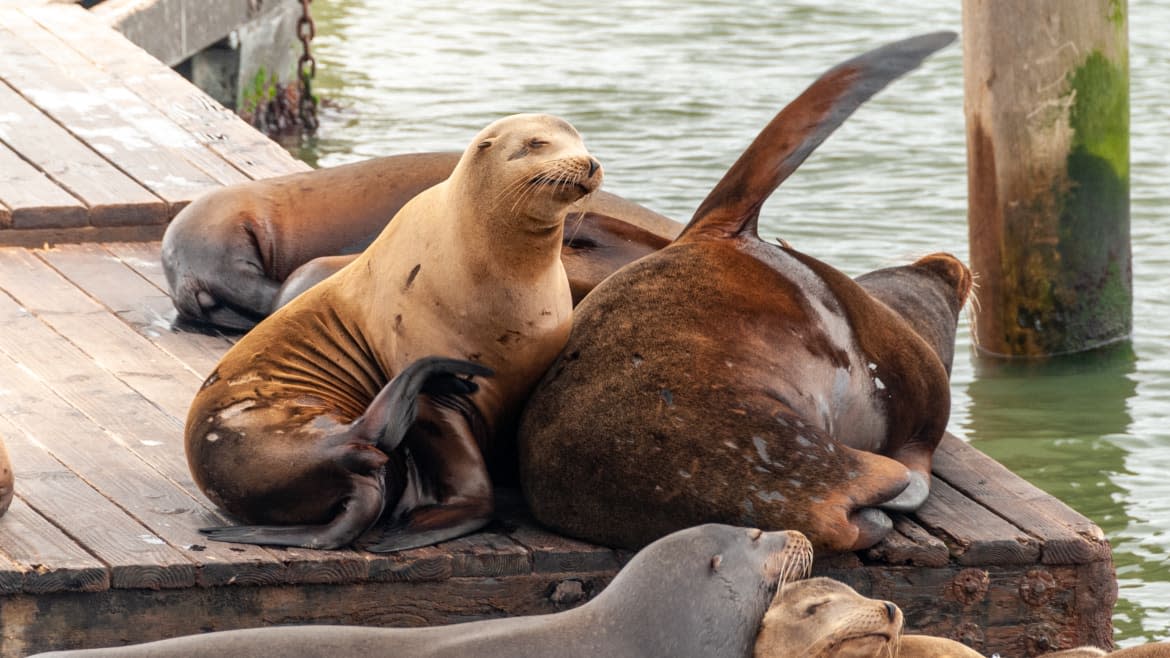This Is the Weird Reason Why California Sea Lions Are Getting So Thicc

Visit the sandy beaches of the West Coast, and there’s a good chance your would-be sunbathing spot is already occupied by a California sea lion. There are as many as 300,000 of these ear-flapped, whiskered, and very noisy marine mammals living in the U.S. alone—but their population hasn’t always been so robust. Hunting and pollution throughout the years meant that there were fewer than 90,000 animals by 1975. The Marine Mammal Protection Act, passed in 1972, is credited with spurring the full recovery of the California sea lion population.
But now that the sea lions are once again brushing up against their natural carrying capacity—or the number of individuals that their environment can support based on available food, habitat, and resources—and scientists who study the animals are starting to see some wacky changes. In a paper published on April 27 in Current Biology, ecologists at UC Santa Cruz and the Smithsonian Institution detailed one such discovery: As population size has grown, the males’ bones seem to be growing larger. Of the sea lions researchers studied between 1962 and 2008, the average male’s skull grew nearly 10 millimeters.
“Some research has shown that as marine mammal populations increase, competition for resources with other individuals and species will likely intensify, eventually resulting in less prey availability,” Ana Valenzuela Toro, the lead author of the new research and an ecology researcher at UC Santa Cruz, told The Daily Beast. She added that for harbor seals and other species of sea lions, these pressures have been found to lead to smaller, not bigger animals, which can hurt species survival in the long run.
Freeway the Sea Lion, a Beloved San Diego Icon, Dies
Contrary to her team’s expectations, male sea lions have gotten bigger over the past 25 years, while females have remained the same size. The researchers took six different skull measurements (a stand-in for body size) of 66 female California sea lions and 273 males from museum specimen collections.
Analyzing the proportion of carbon and nitrogen isotopes in the animals’ bones revealed their diets and habitats, offering a partial explanation for the sex-specific trend in body size. Females, the researchers found, had a wider variety of foraging and dietary preferences than the males. This could mean that less competition exists among female sea lions to drive changes in their body size.
However, that still doesn’t explain why competitive pressure caused the males to grow until you look at a different form of competition, Valenzuela Toro said. Male sea lions are not just constrained by the availability of food and other resources—they must compete to mate with a limited number of females, too.
“During their annual breeding season, males congregate at sites occupied by females and engage in aggressive male-male aggressive interactions for territorial control and secure access to females,” she said. “Bigger males are more competitive during physical fights, and they can go longer without eating, so they can stay and defend their territory for longer.”
Acid, Actresses, and Defectors: Inside the Bizarre History of Marine Mammal Spies
As the population of sea lions grew, these fights likely broke out more and more often, and the larger winners got to pass on their genes to the next generation. Bigger male sea lions might also have more energy, allowing them to forage further and deeper in the water.
Though bigger body size seems to be helping the California sea lion population so far, Valenzuela Toro stressed that climate change has the potential to destabilize or even reverse the trend. The mammals’ diets have historically been dominated by energy-rich sardines and anchovies—both of which fish are threatened by warmer oceans. This time, it will take more than the Marine Mammal Protection Act to keep these large and in charge animals afloat.
Got a tip? Send it to The Daily Beast here
Get the Daily Beast's biggest scoops and scandals delivered right to your inbox. Sign up now.
Stay informed and gain unlimited access to the Daily Beast's unmatched reporting. Subscribe now.

